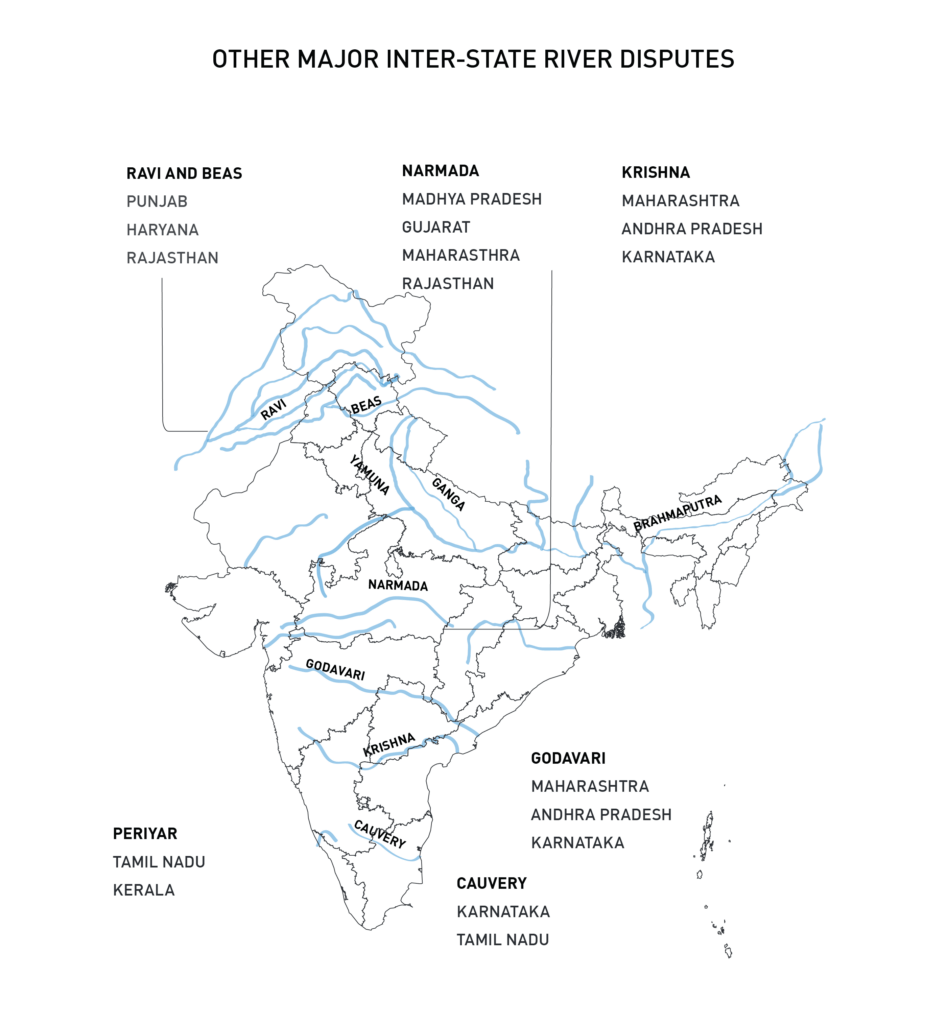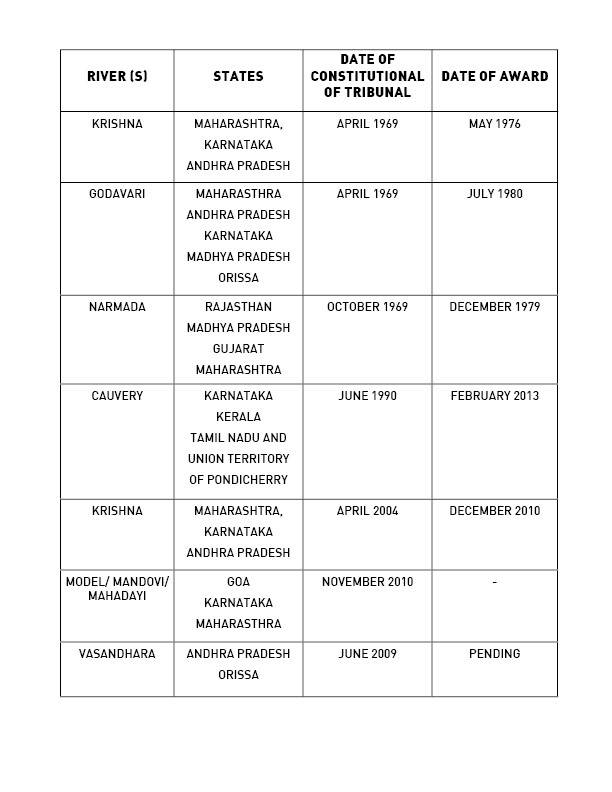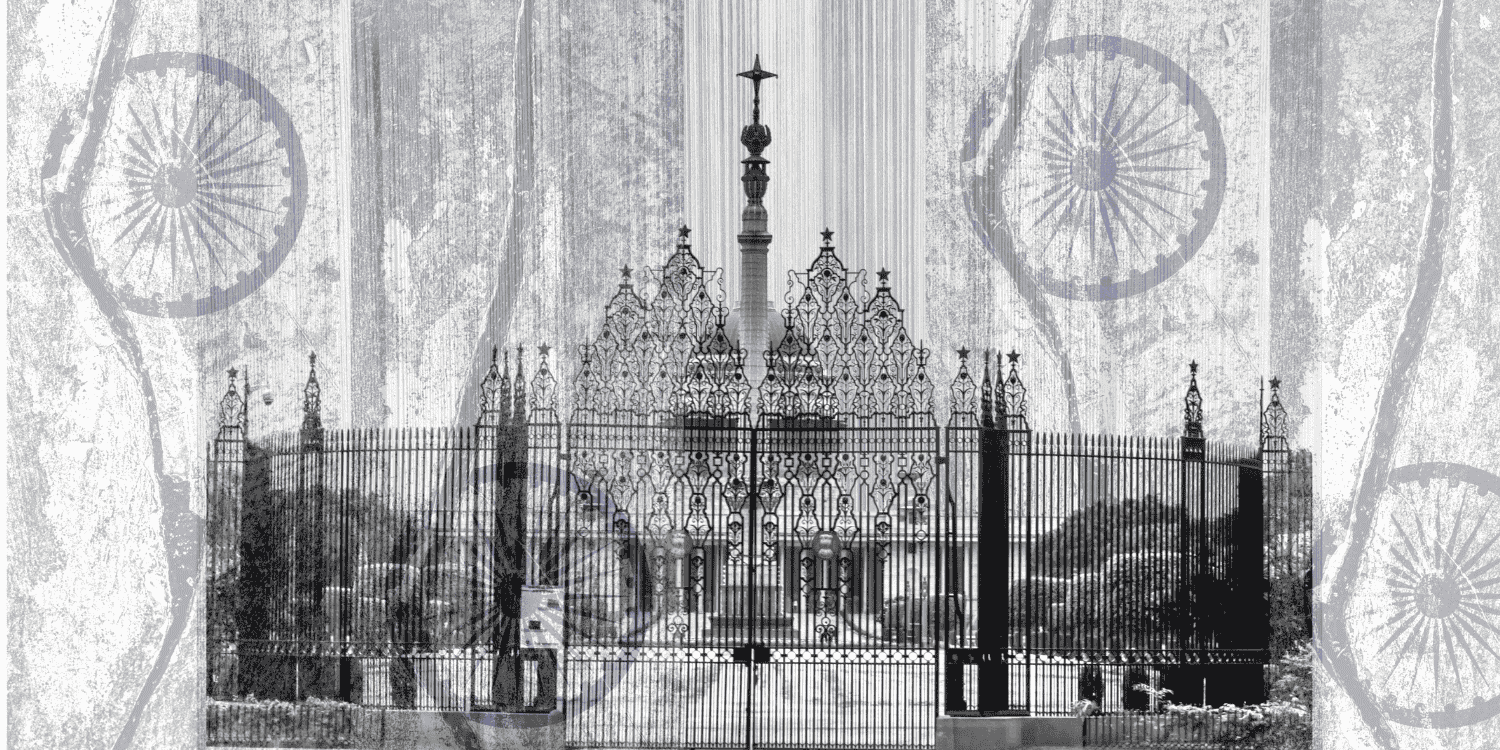Around 600 million people in India face severe water shortage, and according to NITI Aayog’s Composite Water Management Index (2018), the situation is predicted to get worse in the next few years. [1] The report states that 21 cities are expected to completely exhaust groundwater resources available to them by 2020. Over the last two decades in India, problems of depleting water resources, droughts, floods, falling groundwater tables, over-exploitation, inaccessibility, and stakeholder conflicts have emerged across different regions. In fact, the above-mentioned report predicts that by 2030, the country’s water demand is projected to be twice the available supply, “which will push the country into an abysmal state of water scarcity”. [2]
In India, 20 major river basins are shared by as many as 28 states and 9 union territories. Rivers are undoubtedly a major source of surface water, reflecting the role of interstate hydro-geographies in affecting national water supply. India’s national water security is thus inextricably linked to the dynamics of interstate river water sharing. With an infamous history of major inter-state river water disputes since independence, property rights in India have been claimed on the basis of historical use, as well as the Harmon Doctrine, which states: “what falls on our roof is ours to use, without regard to any potential harm to downstream parties”. [3]
Amidst the legal feuds over ownership between upper and lower riparian states, less attention is drawn towards the environmental and socio-cultural ramifications of such conflicts. The dominant discourse warrants an effective dispute-resolution mechanism, but it must be noted that the legality of the matter in question ceases to trump the need for a dialogue to address the ‘water woes’ plaguing all stakeholders. Such disputes are not limited to two parties in discord as to ‘who-owns-what’ but lead to greater concerns over national water security which requires a holistic analysis.

Source: South Asian Network on Dams, Rivers and People
FEDERAL POLITY OF ‘INTERSTATE WATER GOVERNANCE’— IDEALISTIC BUT INEFFICIENT
The severe lack of interstate coordination and cooperation is a pertinent lacuna evident in the policy and institutional developments on water governance in India. This can be traced back to the constitutional division of powers between the Centre and State. The subject of water is listed under the Entry 17 of the State List. But there is another mention of water with respect to interstate river water sharing in Entry 56 of the Union List which mandates the Centre to decide upon the regulation and development of interstate rivers. [4] States have increasingly assumed complete control over interstate river sharing matters, which may prove to have problematic consequences. The Centre’s inability to assert its authority in this matter during the country’s initial years of single party dominance can be considered a possible reason for this trend. The federal structure inherent in dispute resolution has often created more chaos than clarity. The centre-state relations with regard to water governance have been strained, with resistance from the states towards any effort made by the Centre rightfully under Entry 56. The role of the Central Water Commission has also eroded as each state follows different territorial aspirations of water resource conservation and development. Ignoring the imminent cumulative impact of such uncoordinated actions, the actions of the states have contributed to weakening of national water security.
The Interstate (River) Water Disputes Act (IRWDA), passed in 1956 and amended several times since was supposed to be merely a solution to the problem at hand. [5] The River Boards Act 1956, enacted along with the IRWDA and aimed at enhancing collaborative efforts, has largely remained defunct. As a result, interstate river water disputes have historically faced prolonged delays in adjudication due to adversarial litigations. There is a higher dependence on alternative and ad-hoc channels. Defiance of awards by tribunals [6] has become a common occurrence that further weakens people’s faith in effective judicial conduct and escalation or recurrence of the matter entails huge economic costs. Absence of reliable interstate dispute resolution institutions and mechanisms is indicated. More so, the politicisation of matters pertaining to interstate river water relations is uncalled for yet it pervades every step of the process. The difference in interests of political parties is undoubtedly a bone of contention.
Tribunals for interstate river water disputes
 Source: Ministry of Water Resources, Government of India
Source: Ministry of Water Resources, Government of India
CONFLICT RESOLUTION TO CO-OPERATION
Various Projects have been proposed by the government which require a revaluation of complex centre-state relations and the issues of national water governance. Setting ambitious goals calls for strong inter-state cooperation devoid of which the policies will be unable to translate from paper to reality. Both developmental and conservationist efforts require such coordination. For instance, the proposed initiative regarding interlinking of rivers has a high probability of inviting such interstate disputes. [9]
Experts such as Ramaswamy R. Iyer have opposed this plan vociferously. Iyer believes that,
Rivers are not human artefacts; they are natural phenomena, integral components of ecological systems, and inextricable parts of the cultural, social, economic and spiritual lives of the communities concerned. They are not pipelines to be cut, turned around, welded and rejoined. [10]
Moreover, interlinking is focused more on improving accessibility to water rather than catering to the problems associated with sources of water. Piped water supply does nothing to solve the issue of depleting water resources and overconsumption. So policymakers must give priority to conservation and development of various water sources and then move towards accessibility. This is a suggested logical flow in the framework of the National Water Policy. Section 12.4 of the National Water Policy 2012 proposes,
Integrated Water Resources Management (IWRM) taking river basin/sub-basin as a unit should be the main principle for planning, development and management of water resources. The departments/organizations at Centre/State Governments levels should be restructured and made multi-disciplinary accordingly.
Declaring IWRM as the basis for water policy is not enough. [11] There is extreme ambiguity about the functioning of these institutions in the realms of the Centre and State. No clear direction is given with regard to how cooperation can be fostered amongst these two levels of water governance. There is a need for a more robust institutional framework to address the issues, needs, and implementation of the national water security project.
PARADIGM SHIFT: BEYOND LEGALITY
The importance of moving from conflict resolution to facilitating cooperation amongst states is essential in framing an effective interstate river water sharing policy. This would require looking at the issue of interstate water relations beyond the lens of legality to other factors that determine a just solution not merely in form of a legal ‘award’ but a mutually beneficial agreement between all the stakeholders. In this context it is important to note that the category of ‘stakeholders’ entail more than just the parties/states involved in the quest to gain ownership rights over the river. An interstate river water dispute is not an isolated conflict.
What is urgently required is a broad vision at the highest levels that connects these seemingly isolated disputes and recognizes their potential impact on the overall economy, sociocultural fabric, political stability, and security of not only the regions in which they occur, but also of the entire country. [12]






